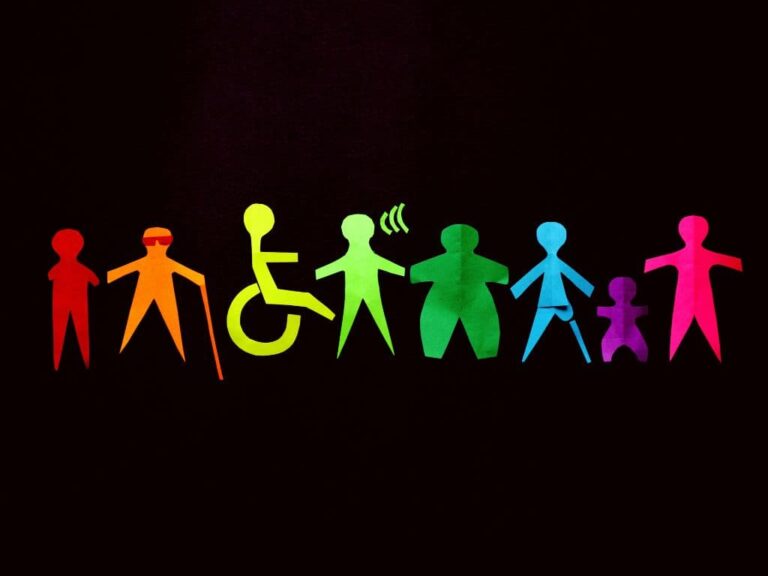What is Supported Living?
As people age, many require increasing levels of care and assistance with daily activities. For seniors who want to maintain independence but need additional support, supported living can provide a middle ground between living completely independently and moving to a nursing home.
Supported living refers to a range of services and community living arrangements designed to help seniors retain their autonomy and remain engaged in their local community.
This article will examine the different types of supported living options available to seniors, the costs and benefits of supported living, factors to consider when choosing an arrangement, and how supported living impacts quality of life. With the right planning and support, seniors can thrive in a supportive living environment.

What is Supported Living for Seniors?
Supported living allows seniors in need of assistance to continue living in their own home or an independent residential setting while getting the care and support required for daily living. It aims to promote independent living for as long as possible while providing care and resources tailored to the individual. Support services may include assistance with household chores, meals, bathing, dressing, medication management, transportation, and accessing community activities. Supported living arrangements can take many forms, ranging from in-home caregivers to all-inclusive residential communities. The level of care provided depends on the needs of the individual. The overall goal is maintaining seniors’ dignity, autonomy, and engagement with their community.
For many seniors, especially those with chronic illnesses like dementia or Alzheimer’s disease, supported living provides a viable alternative to nursing homes that allows them to preserve independence while getting necessary care. With the help of assistants and communities designed for senior well-being, even those with physical or cognitive disabilities can continue living active, socially connected lives.
Supported living acknowledges the realities of aging while providing solutions tailored to each senior’s needs and preferences.
What Different Types of Supported Living Arrangements are Available for Seniors?
There are several major types of supported living options available to seniors with varying levels of care and assistance:
Assisted living facilities provide housing, meals, care, and health services for seniors in a residential community setting. They offer different levels of care from minimal assistance to intensive memory care. Seniors often have private rooms or suites and access to shared community spaces. Assistance with daily activities like dressing, bathing, and medication can be provided by staff. Activities and social events are also available.
Nursing homes provide 24-hour skilled nursing care from licensed staff. They are for seniors who require intensive medical care and supervision. Assistance with all daily living activities is provided. Nursing homes offer rehabilitation services and long-term care for chronic conditions.
Memory care facilities specialize in caring for seniors with Alzheimer’s, dementia, and other cognitive conditions. They provide a secured environment designed to reduce confusion and wandering risks. Staff are trained in memory care techniques to manage behaviors and communication challenges. Activities are tailored for those with cognitive decline.
Adult day care centers provide care and companionship for seniors during daytime hours, allowing them to return home at night. Transportation, meals, medication management, medical care, counseling, social activities, and personal care are provided. This allows family caregivers respite.
Home health care agencies send professional caregivers to seniors’ homes to provide assistance with daily tasks. Services may include personal care, housekeeping, companionship, medication reminders, transportation, and meal preparation. The level of care is customized.
In-home care providers offer individualized assistance on an hourly or live-in basis. Options range from homemakers who provide light housekeeping to certified nursing assistants who can dispense medication and tend to medical needs. Daily or as-needed care is available.
Who is Eligible for Supported Living and How Much Does it Cost?
Most supported living options are available to seniors over 65 who require help with daily activities. Eligibility is based on an assessment of each senior’s functional and cognitive abilities and care needs. Veterans and low-income seniors may qualify for financial assistance programs to help pay for supported living services. Out-of-pocket costs vary widely based on the level of care required, type of residence, and geographic location.
Assisted living communities typically cost between $3,000-$6,000 per month including rent, meals, activities, housekeeping, and personal care. Memory care units are more expensive. Costs may be covered by long-term care insurance, veterans’ benefits, or Medicaid in some states.
Nursing home care starts around $220 per day for a semi-private room, totaling $6,600 per month. Prices are higher for private rooms. Medicare provides short-term skilled nursing coverage but does not pay for custodial long-term care. Medicaid can help cover costs for low-income seniors.
Adult day care programs range from $65-$125 daily. Some long-term care policies include this.
Home health care costs $20-$25 per hour for a basic aide up to $35-$50 per hour for a licensed nurse. This care may be covered through Medicare, Medicaid waivers, or long-term care insurance.
Live-in in-home care can cost $3,000-$5,000 per month. Hourly care is $15-$35 per hour. Caregiver wages and local rates influence pricing.
Financial planning and consultation with a lawyer is advisable to navigate the myriad of options.
What are the Benefits and Drawbacks of Supported Living for Seniors?
Supported living offers many potential advantages compared to institutional care:
- Preserves independence and autonomy
- Provides social interaction to avoid isolation
- Tailors care to individual preferences and needs
- Offers engaging activities and flexibility
- Maintains connections to home and community
- Delivers care in a residential rather than clinical setting
However, there are also some potential drawbacks:
- Can be expensive depending on level of care required
- Quality of care depends heavily on staff skills
- Risk of social isolation still exists in some settings
- Medical care may not be as comprehensive as in a nursing home
- Moving can be emotionally and logistically difficult
- Finding the optimal arrangement can be challenging
The ideal supported living situation allows seniors to “age in place” and retain independence while getting assistance adapted to their evolving abilities and needs. But finding the right balance of care, autonomy, and community can be complex. Working closely with health professionals and considering all options is essential.
How to Choose the Right Supported Living Arrangement for Seniors
Choosing supported living involves weighing factors like:
- Current health conditions and future needs
- Level of assistance required with daily activities
- Financial resources and insurance coverage
- Location preferences and proximity to family
- Emotional needs for privacy versus community
- Preferences for social interaction and activities
- Comfort with sharing living space versus having own residence
Determining the best option requires carefully assessing the specific needs of individual seniors and aligning resources accordingly. Those with intensive medical needs or moderate-severe dementia may fare best in a nursing home or memory care unit, while those desiring maximum autonomy may prefer in-home assistance. Partnering with geriatric care managers, doctors, and families helps identify the right solution.
Regularly re-evaluating needs is also crucial as abilities change. Supported living should flex to meet seniors’ evolving capacities and desires. With careful planning and vigilance, seniors can thrive in supportive environments tailored to nurturing their physical, social, and emotional well-being.
What are the Legal Considerations for Supported Living?
Supported living carries important legal and financial considerations:
- Review contracts carefully and involve lawyers to ensure rights are protected.
- Understand service termination conditions and requirements.
- Clarify financial obligations – which services are covered and policies for fee increases.
- For home services, conduct background checks on caregivers and verify insurance/bonding.
- Explore all funding options including insurance, veterans aid, and Medicaid. Consult with financial advisor.
- Assign advanced directives for health care decisions and powers of attorney.
- For residential facilities, check state licensing and regulatory compliance.
Proper legal and financial planning is essential to avoid future issues. Consulting lawyers, financial planners, and care advisors helps navigate these legal issues and protect supported seniors.
How Does Supported Living Impact the Emotional Well-being and Social Interaction of Seniors?
The emotional challenges of supported living can include feelings of dependence, lost autonomy, and difficulty adjusting to declining abilities. Creating opportunities for self-determination in care decisions counteracts these feelings. Encouraging seniors to decorate their space and pursue hobbies boosts emotional health. Extra staff attention helps ease transitions.
Cultivating social interaction among seniors is critical to alleviate isolation and depression. Supported living offers built-in community through group dining, activities, outings, and events. Developing friendships and connecting with younger volunteers, staff, and family fosters engagement. Intergenerational programs with children and pets also reduces detachment. With proper policies and programming, supported residences can nurture meaningful relationships.
How to Enhance Quality of Life in Supported Living
Seniors can optimize their experience by:
- Maintaining social connections and community involvement
- Staying engaged through regular activities, hobbies, and learning
- Participating in decisions about their care and living situation
- Expressing preferences to staff to individualize care
- Personalizing their living space to reflect interests and personality
- Seeking companionship opportunities to avoid isolation
- Adopting habits and routines that provide meaning and purpose
Supported living should enhance, not diminish, seniors’ livelihood. Residences must create opportunities for self-expression, growth, and purpose. Through resident-centered programming, collaborative decision making, and attentive care teams, seniors can meaningfully shape their environment.
Personal experiences of seniors who have lived in various arrangements while facing challenges like Alzheimer’s or post-hospital recovery demonstrate that supported living can successfully maintain dignity and joy. But it requires choosing the right community, building connections, and speaking up about needs. With proper support, senior years can still be vibrant and fulfilling.
What is the Future of Supported Living for Seniors?
Current trends point to continued growth in supported living as more seniors desire residential options that balance independence and assistance. Aging baby boomers will further expand demand for flexible, individualized care. Technology integration will likely increase through solutions such as smart home sensors, mobile health monitoring, and virtual reality engagement. More options to “age in place” at home with supportive technologies and services are also emerging.
Overall, supported living is expected to continue evolving to meet rising demand from seniors seeking alternatives to nursing homes. While costs and caregiver shortages pose challenges, market forces and policy changes will likely incentivize creative solutions to facilitate aging with independence, dignity, and community. With proper planning, supportive options can effectively sustain seniors’ well-being and quality of life.
Frequently Asked Questions
-
Is supported living means tested?
Supported Living, which is paid by the Government via the Ministry of Health is non-medically tested.
-
What are signs that dementia is getting worse?
Poor judgment or confusion. Greater memory loss including the loss of information from the distant past. Needing help with daily tasks such as dressing, grooming and bathing. Significant personality and behavioral changes often due to agitation or unfounded suspicion.
-
What is not covered by Medicaid?
Medicaid does not have to cover private nursing services or caregiving services for household members. Other disposables, such as bandages and adult diapers, are not covered by Medicaid. Cosmetic surgery and elective procedures, however, are excluded from coverage.
-
Can a family member be a paid carer?
What is the best way to pay someone for caring for my family members? While someone may be mentally competent, they have the right to decide what to do with their money. They can also choose to pay relatives to care for them. The cost of the care must be reasonable, affordable and sustainable.
-
Is it worth living alone?
Being alone gives you extraordinary freedom and allows you to concentrate on the things you want. Living alone gives you the confidence to do anything.
-
Who funds supported housing?
Following the 2020/21 RSAP bid round, the Greater London Authority and Department of Levelling Up, Housing & Communities announced funding allocations of 76.5m in capital and revenue funding for London. This will enable them to build over 900 houses and provide support services to those who live there.
-
What’s the 50 30 20 budget rule?
In her book All Your Worth: A Ultimate Lifetime Money Plan, Senator Elizabeth Warren famously referred to the “50/20/30 budget rules” (sometimes called “50-30-20”) as a way of balancing your finances. Divide after-tax income into three parts and spend 50% on necessities, 30% on desires, and 20% for savings.
-
What is classed as extra care?
Extra-care housing, also known as assisted living, is a form of “housing with care” that allows you to retain your independence, but have someone assist you with things like dressing up, washing and taking medications.
-
At what point do dementia patients need 24 hour care?
Alzheimer’s disease can lead to a loss of control and inability to perform daily tasks. These people require 24-hour supervision and care. These patients are less able to communicate with others, including to tell them they’re in pain. They also are more susceptible to infection, particularly pneumonia.
-
Do direct payments affect PIP?
The mobility component/enhanced mobility portion of PIP is not considered by Social Services when assessing your contribution to care packages/direct payments. Instead, they consider the care component/daily living part of PIP.
-
Do you have to pay for Medicaid?
Medicaid and Children’s Health Insurance Programs (CHIP), provide low-cost or free health care to many Americans. This includes low-income families, children and pregnant women as well as people with disabilities.
-
What are the benefits of the independent living movement?
Independent Living activists led some of America’s most courageous protests, including the longest-running occupation of a Federal Building in American Civil Rights history. This resulted in the publication of regulations prohibiting discrimination against persons with disabilities who are enrolled in federally funded programs.
-
What is the difference between sheltered housing and assisted living?
Sheltered housing, unlike care homes isn’t inspected and not given rating. While assisted living is more supportive than sheltered housing, it still permits you to live on your own.
-
Can I claim Carers Allowance for myself?
Anybody can claim it for themselves, provided they prove that they satisfy the Government’s criteria. They include the caregiver, their caretaker and the kind of care that they offer.
-
What is living comfortably?
Charles Schwab asked Americans to tell him that they needed a net worth of $934,000 in order to feel financially secure. Personal Capital also found that Americans need an average savings of $516,000 in order to be financially healthy.







